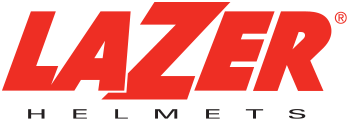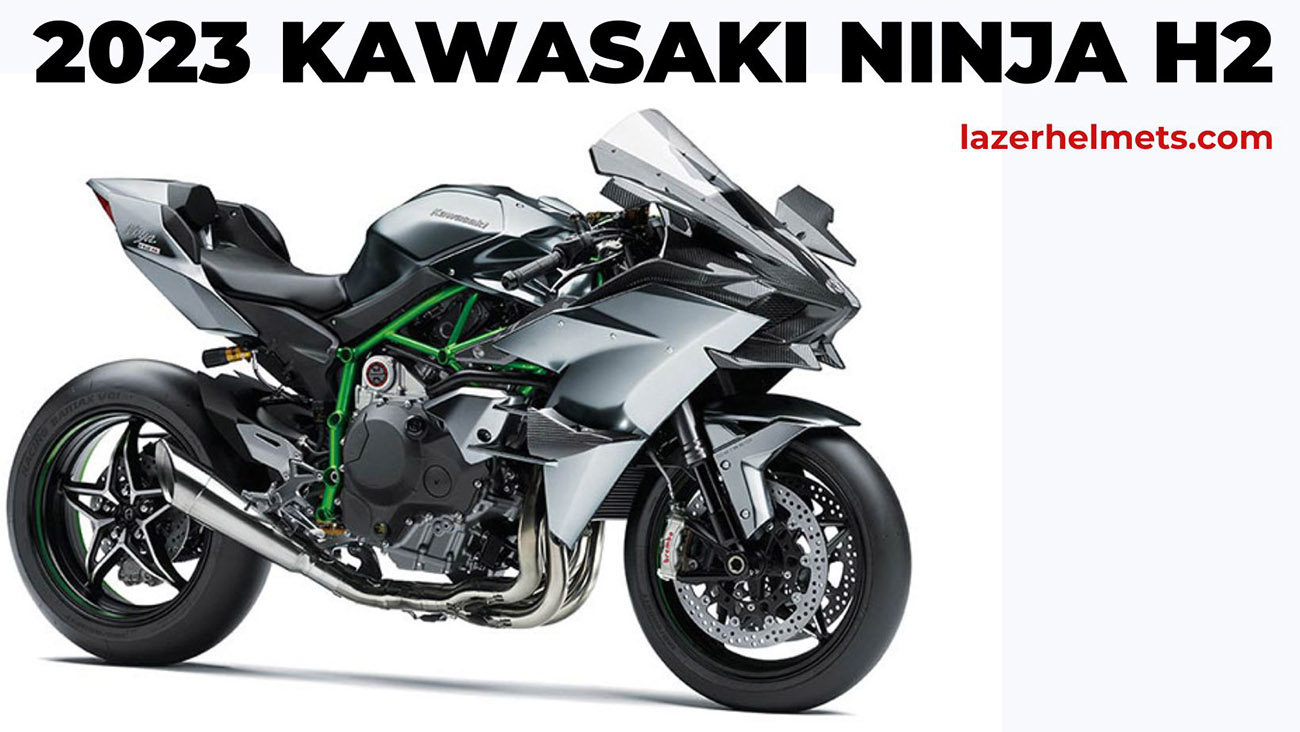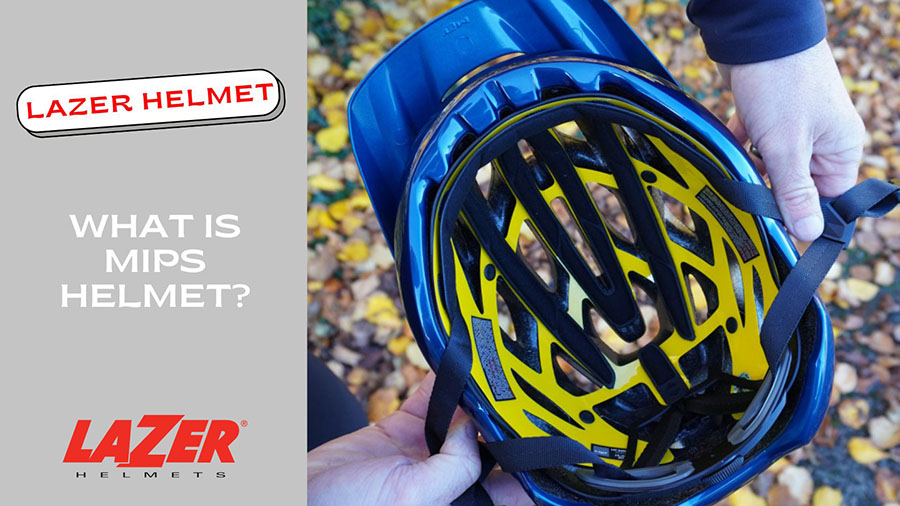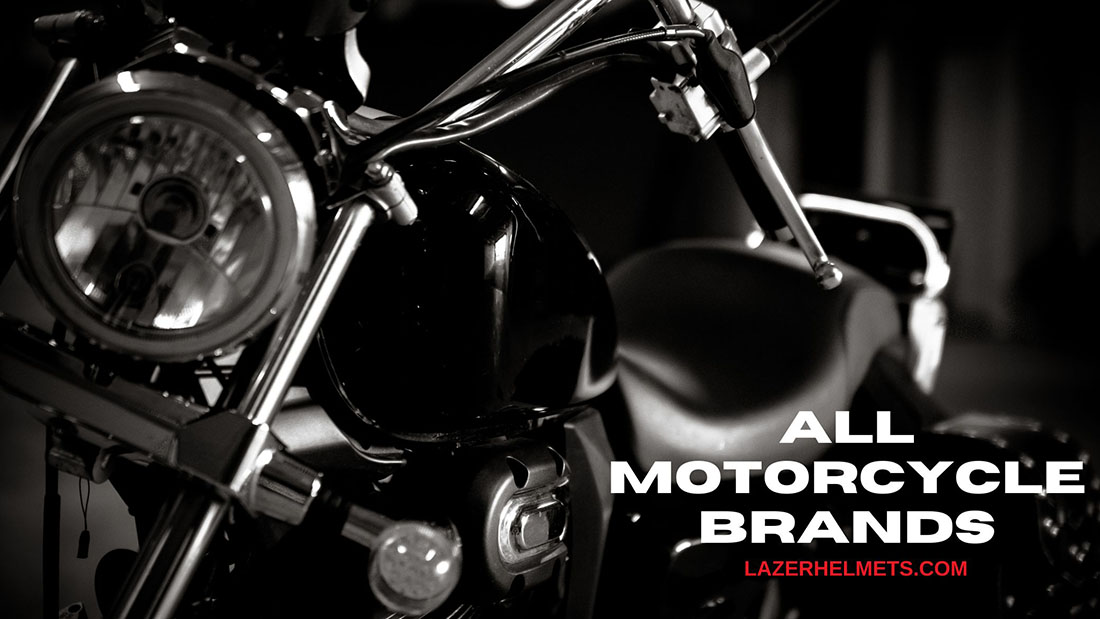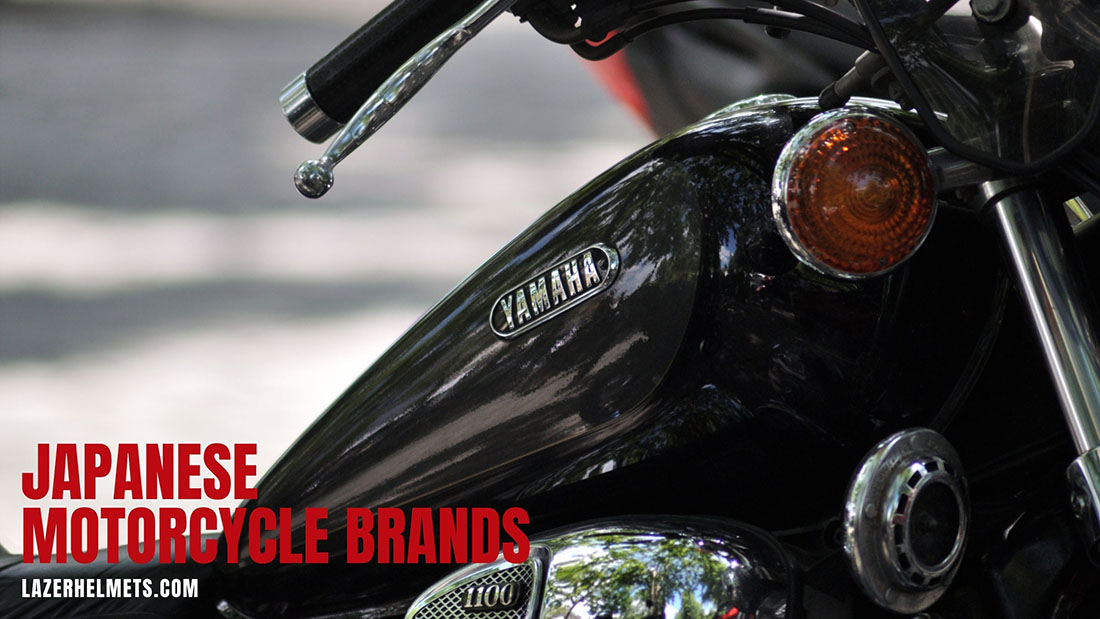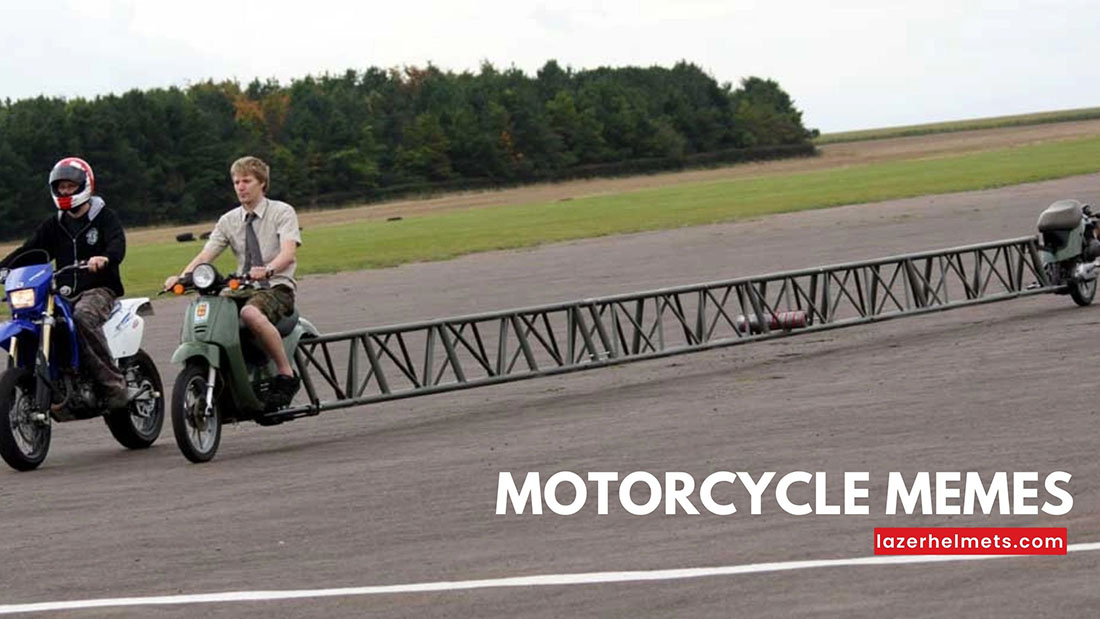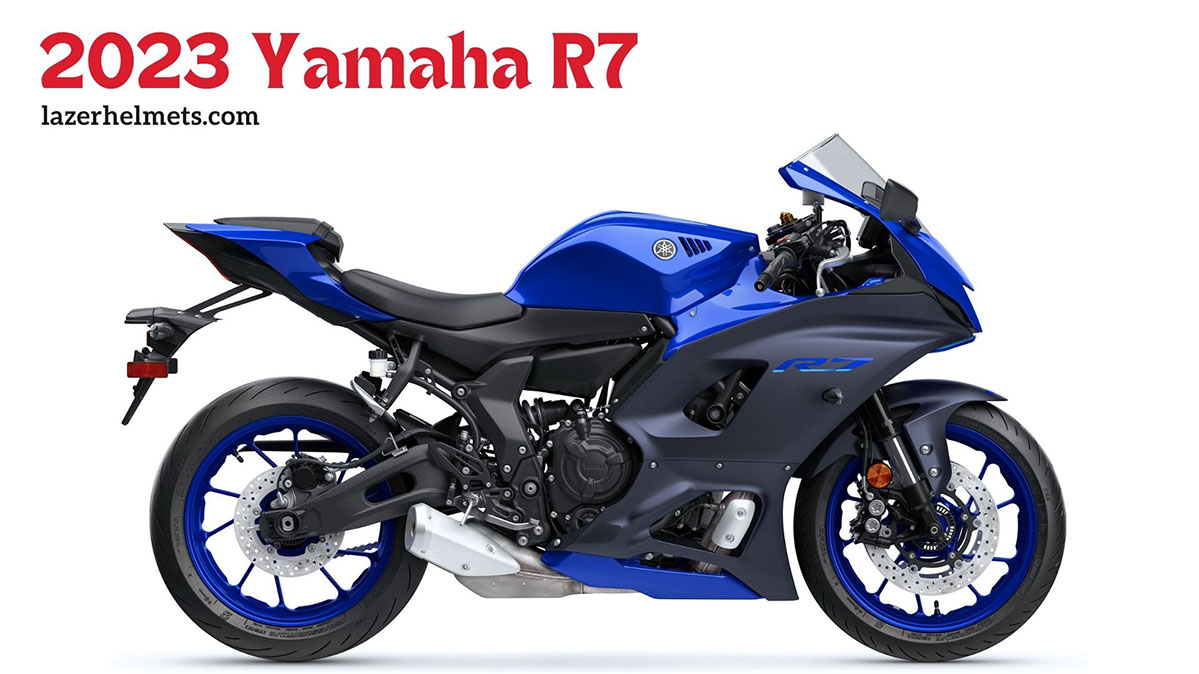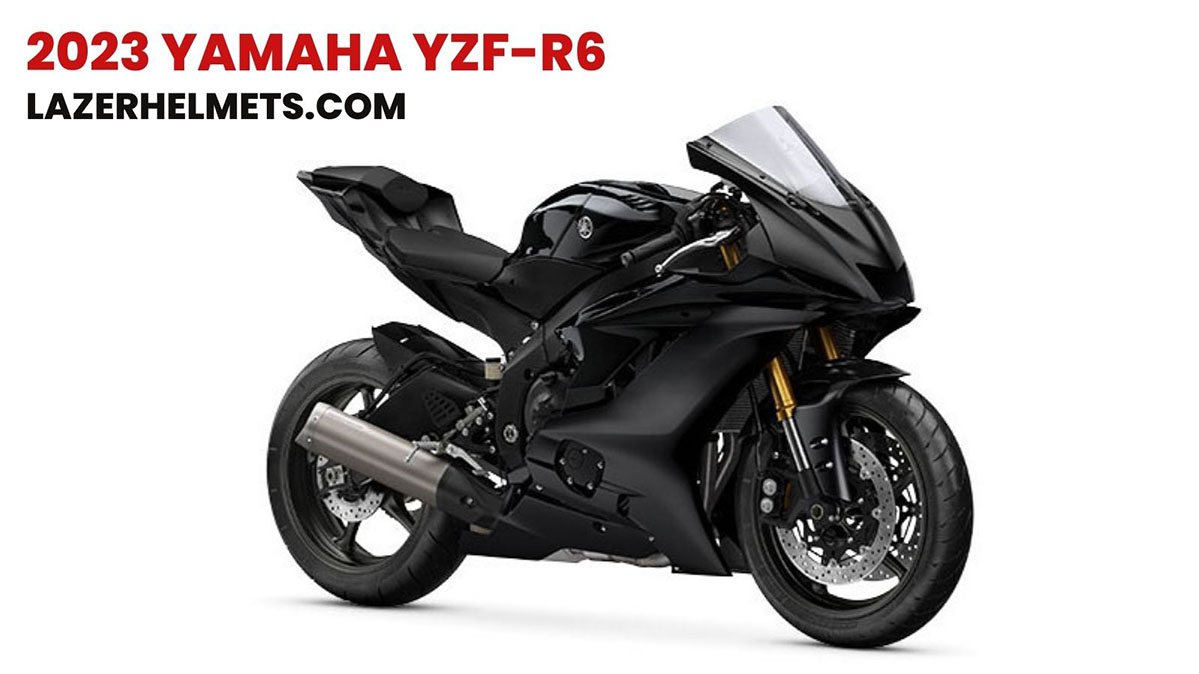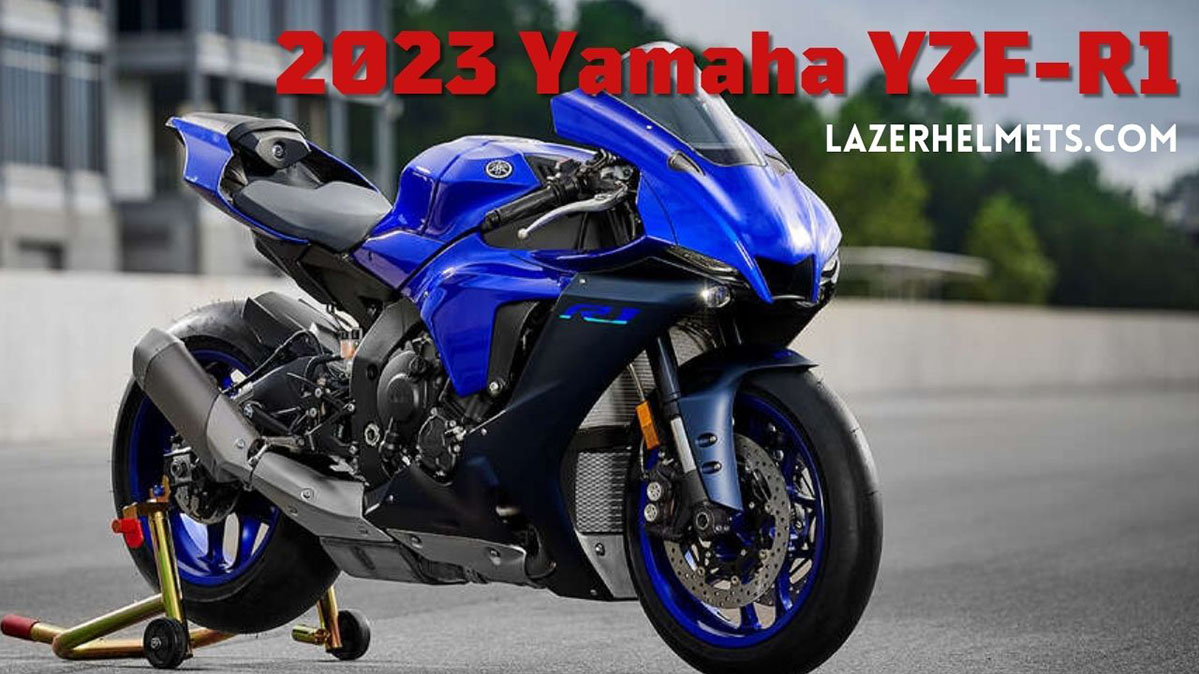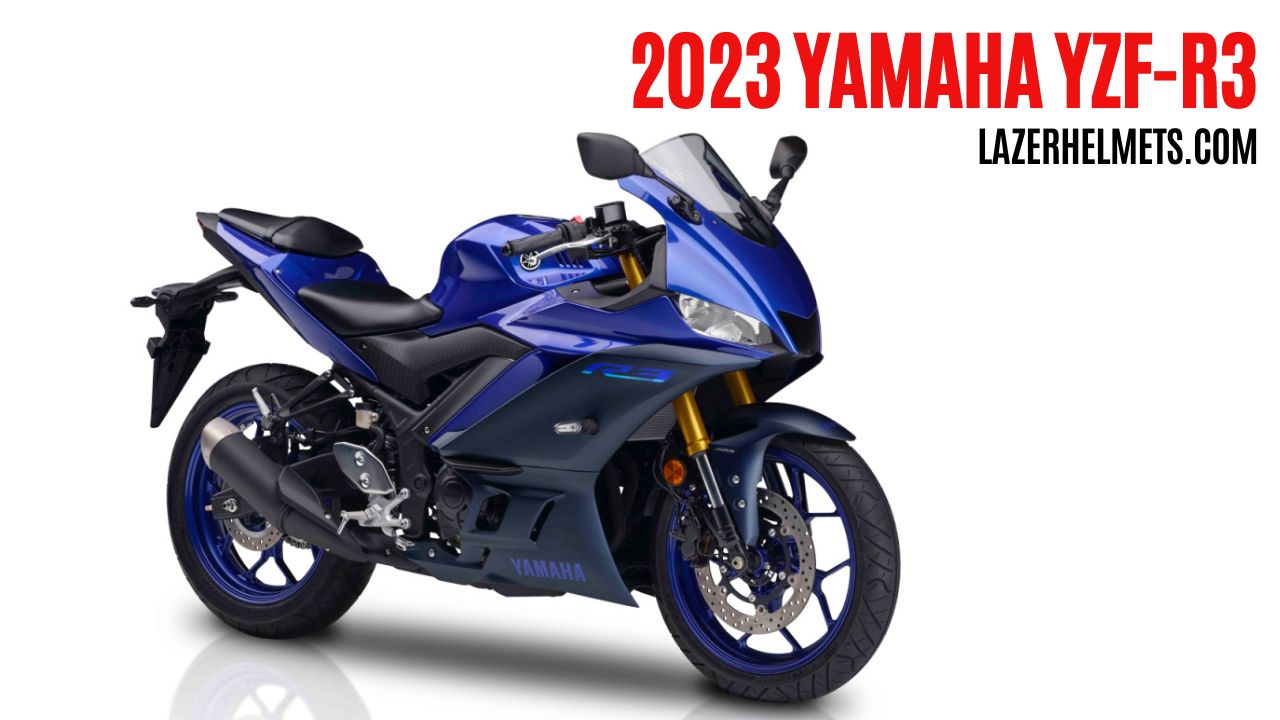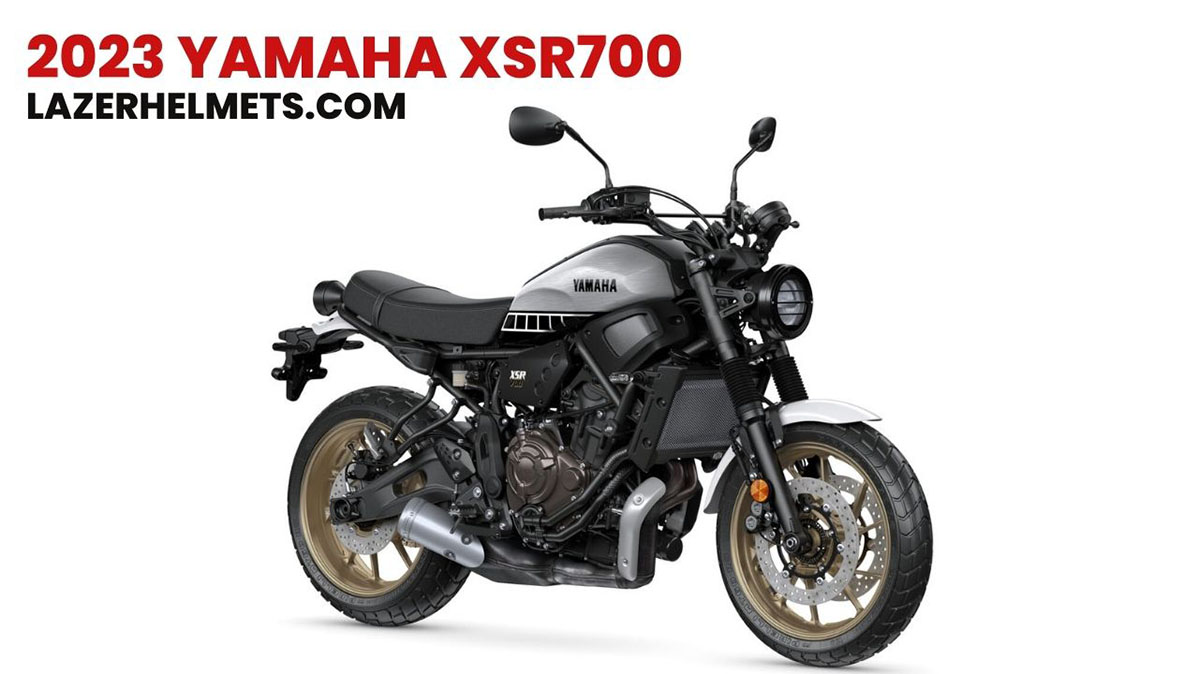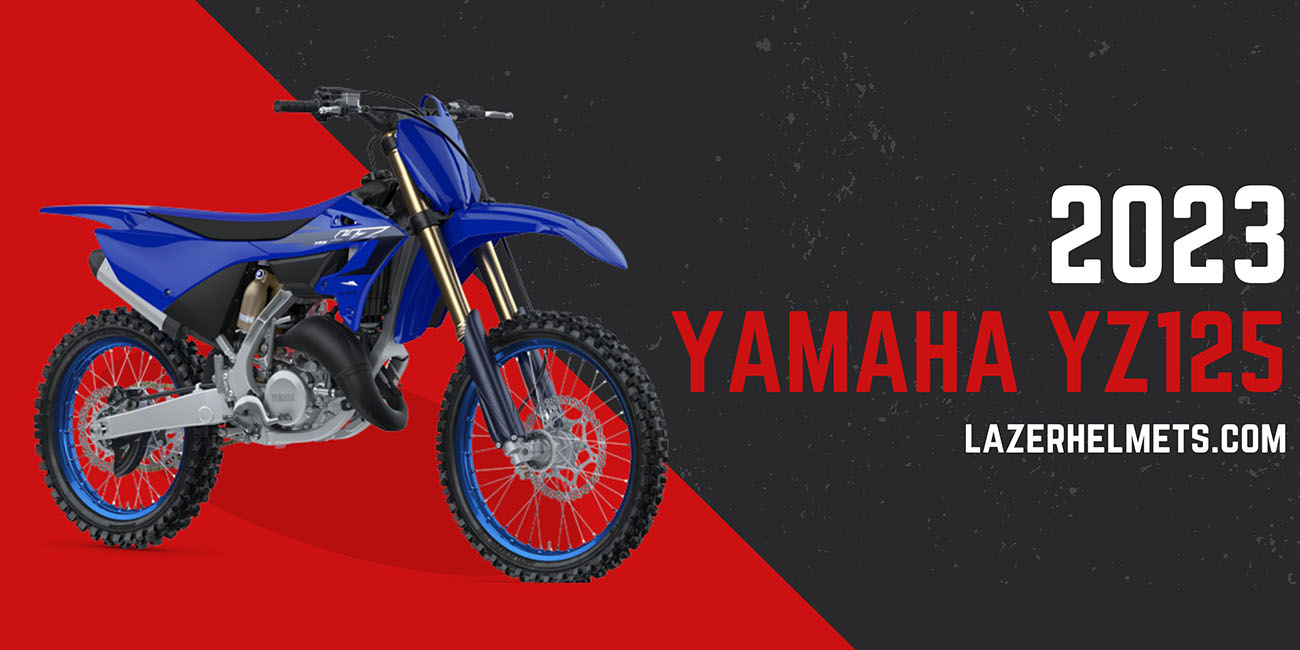In This Article:
The 2023 Ninja H2 is a stunning sportbike designed for speed and mind-bending power, considered to be Kawasaki’s most advanced sport-tourer. With its aggressive looks and cutting-edge technology, the Ninja H2 is a true standout in the world of motorcycles.
This 2023 version is a work of art with sleek lines and aerodynamic bodywork that make it stand out. Elements such as a lightweight trellis frame, single-sided swingarm, and a unique exhaust system accentuate the bike’s aggressive looks. It also has a more aerodynamic fairing design that brings optimal airflow and reduces drag, as well as a new LED headlight and taillight that enhance visibility and add to the bike’s futuristic aesthetic.
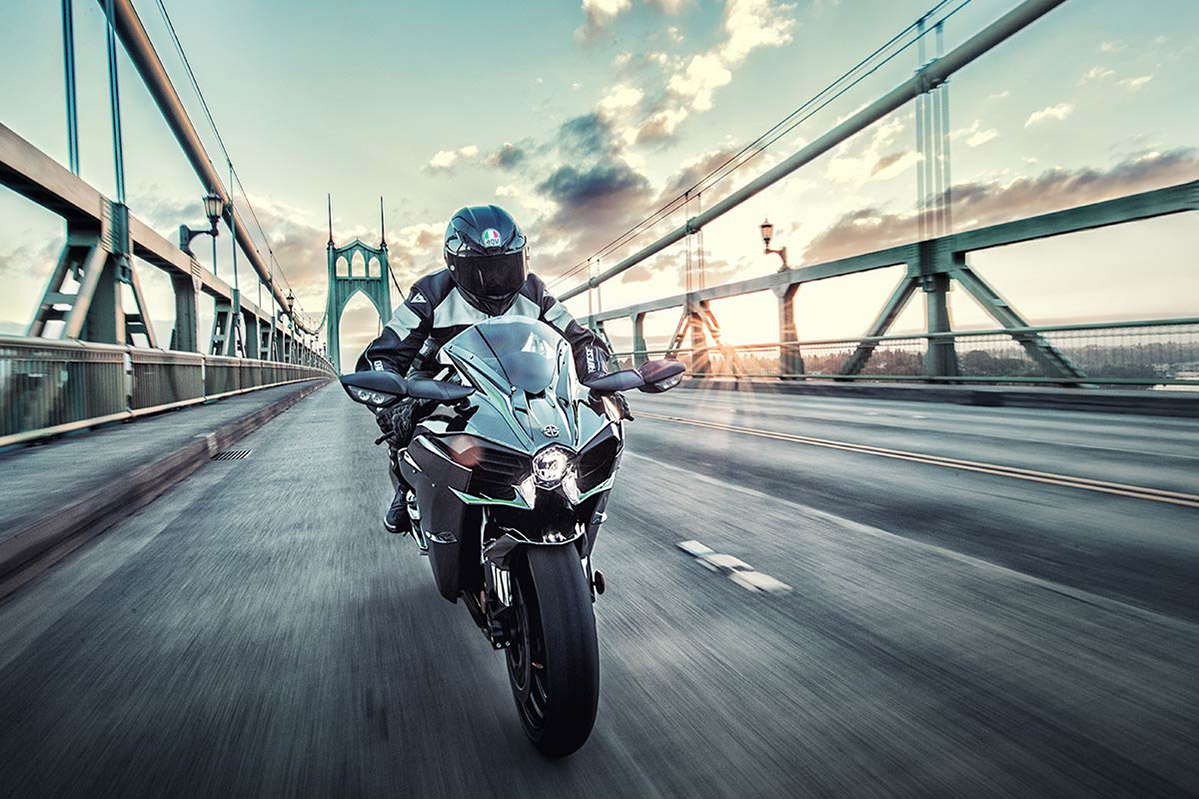
One of the most significant updates to the 2023 Ninja H2 is the air-cooled supercharger. This new hyper sport design replaces the older water-cooled version, and it promises to provide unmatchable performance and reliability. The supercharger is also smaller and lighter than the previous version, which helps to reduce the motorcycle’s overall weight.
Another noticeable trait is the updated suspension system, featuring Showa’s latest BFF (Balance Free Fork) and BFRC (Balance Free Rear Cushion) technology. These key enhancements provide better handling and stability, especially during high-speed maneuvers.
Kawasaki even added a suite of electronic control systems to the design, letting bikers customize the motorcycle’s high-power performance to their preferences. Also, the multiple integrated riding modes, including Sport, Road, Rain, and Rider, enable bikers to adjust the engine output, Kawasaki traction control, and ABS to suit their riding style.
What about the price? Kawasaki set the starting price at $31,500 – as per Kawasaki. This sales price point, though sky-high, is not surprising, given the advanced technology and performance capabilities of the bike. It is a top-of-the-line super sports bike option for serious riders who demand the very best in unmatched performance and technology, so it makes sense to be sold with such a high price tag.
2023 Kawasaki Ninja H2 Specs
- Make: Kawasaki
- Model Year: 2023
- Type: Hypersport
- Color: Mirror Coated Spark Black
- MSRP Price: $31,500
- Warranty: 1-year Limited Warranty
- Warranty Plus: 12, 24, 36 or 48 months
- Engine: 998cc, 4-stroke
- Power: 228 HP
- Mileage: 35.28 mpg (15 km/l)
- Transmission: 6-speed
- Fuel Tank Capacity: 4.5 gal (17 l)
- Seat Height: 32.5 in. (825.5 mm)
- Curb Weight: 524.8 lb. (238 kg)
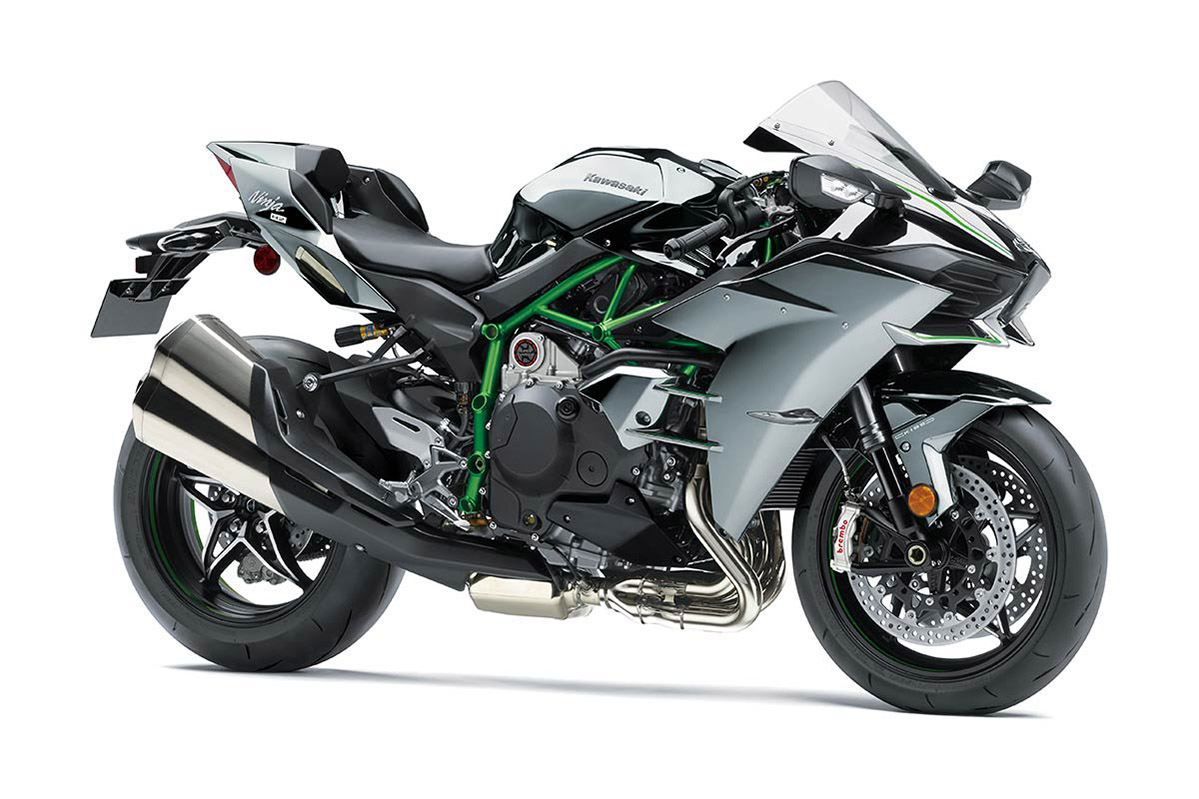
2023 Kawasaki Ninja H2 Specifications
Engine
| Engine | 998cc, Liquid -cooled, 4-stroke, In-Line Four, DOHC, 16-valve |
| Power | 228 horsepower |
| Torque | 104.9 lb-ft (142.2 Nm) @ 11,000 rpm |
| Bore x Stroke | 76.0 x 55.0mm |
| Compression Ratio | 8.5:1 |
| Fuel System | DFI® with 50mm throttle bodies (4) with dual injection ; Kawasaki Supercharger |
| Ignition | Digital |
Drivetrain
| Transmission | 6-speed, return, dog-ring |
| Final Drive | Sealed chain |
Chassis
| Rake/Trail | 24.5°/4.1 in |
| Frame Type | Trellis, high-tensile steel, with swingarm mounting plate |
| Front Suspension | 43mm inverted fork with adjustable rebound and compression damping, spring preload adjustability and top-out springs/4.7 in |
| Rear Suspension | Uni-Trak®, Öhlins TTX36 gas charged shock with piggyback reservoir, 24-way compression and rebound damping and adjustability and hand-turn spring preload adjustability, and top-outspring/5.3 in |
| Front Brakes | 120/70 ZR17 (58W) |
| Rear Brakes | 200/55 ZR17 (78W) |
| Front Tires | Dual radial-mount, opposed 4-piston Brembo Stylema® calipers, dual semi-floating 330mm discs, KIBS ABS |
| Rear Tires | Opposed 2-piston calipers, single 250mm disc, KIBS ABS |
Dimensions
| Overall Length | 82.1 in. (2085 mm) |
| Overall Width | 30.3 in. (770 mm) |
| Overall Height | 44.3 in. (1125 mm) |
| Ground Clearance | 5.1 in. (129.5 mm) |
| Seat Height | 32.5 in. (825.5 mm) |
| Wheelbase | 57.3 in. (1455 mm) |
| Curb Weight | 524.8 lb. (238 kg) |
| Fuel Capacity | 4.5 gal (17 l) |
Competitors
| Model | Price | Engine | Top Speed |
|---|---|---|---|
| 2023 Ducati Panigale V4 R | £40,000 | 998cc | 200 mph |
| 2023 Aprilia RSV4 | £17,150 | 1099cc | 186 mph |
| 2023 BMW S 1000 RR | $17,895 | 999cc | 186 mph |
2023 Kawasaki Ninja H2 Features
Economical Riding Indicator
Using high-precision electronic control for engine management, Kawasaki models can achieve a high level of fuel efficiency. However, fuel consumption is greatly affected by throttle use, gear selection, and other elements under the rider’s control. The Economical Riding Indicator is a function that indicates when current riding conditions are consuming a low amount of fuel. The system continuously monitors fuel consumption, regardless of vehicle speed, engine speed, throttle position and other riding conditions. When fuel consumption is low for a given speed (i.e. fuel efficiency is high), an “ECO” mark appears on the instrument panel’s LCD screen. By riding so that the “ECO” mark remains on, fuel consumption can be reduced.
Electronic Throttle Valves
Kawasaki’s fully electronic throttle actuation system enables the ECU to control the volume of both the fuel (via fuel injectors) and the air (via throttle valves) delivered to the engine. Ideal fuel injection and throttle valve position results in smooth, natural engine response and the ideal engine output. The system also makes a significant contribution to reduced emissions.
Electronic throttle valves also enable more precise control of electronic engine management systems like S-KTRC and KTRC, and allow the implementation of electronic systems like KLCM, Kawasaki Engine Brake Control, and Electronic Cruise Control.
Kawasaki Engine Brake Control
The Kawasaki Engine Brake Control system allows riders to select the amount of engine braking they prefer. When the system is activated, the engine braking effect is reduced, providing less interference when riding on the track.
KLCM (Kawasaki Launch Control Mode)
Designed to assist riders by optimizing acceleration from a stop, KLCM electronically manages engine output to minimize wheel spin when moving off. With the clutch lever pulled in and the system activated, engine speed is limited to a determined speed while the rider holds the throttle open. Once the rider releases the clutch lever to engage the clutch, engine speed is allowed to increase, but power is regulated to minimize wheel spin and help keep the front wheel on the ground. The system disengages automatically once a predetermined speed has been reached, or when the rider shifts into third gear. Depending on the model, riders can choose from multiple modes, each offering a progressively greater level of intrusion.
KCMF (Kawasaki Cornering Management Function)
Using the latest evolution of Kawasaki’s advanced modeling software and feedback from a compact IMU (Inertial Measurement Unit) that gives an even clearer real-time picture of chassis orientation, KCMF monitors engine and chassis parameters throughout the corner – from entry, through the apex, to corner exit – modulating brake force and engine power to facilitate smooth transition from acceleration to braking and back again, and to assist riders in tracing their intended line through the corner. The systems that KCMF oversees vary by model, but may include:
- S-KTRC/KTRC (including traction management and wheel lift management)
- KLCM (including traction management and wheel lift management)
– Designed to optimize acceleration from a stop - KIBS (including pitching management and corner braking management)
- Kawasaki Engine Brake Control
KTRC (Kawasaki Traction Control)
KTRC, Kawasaki’s advanced traction control system provides both enhanced sport riding performance and the peace of mind to negotiate slippery surfaces with confidence. Multiple rider-selectable modes (the number of modes varies by model) offer progressively greater levels of intrusion to suit the riding situation and rider preference.
Less intrusive modes maintain optimum traction during cornering. Designed with sport riding in mind, they facilitate acceleration out of corners by maximizing forward drive from the rear wheel. And because Kawasaki’s sophisticated software bases its dynamic analysis on the chassis’ orientation relative to the track surface (rather than relative to a horizontal plane), it is able to take into account corner camber, gradient, etc., and adapt accordingly.
Supercharged Engine
Drawing on the know-how and technology possessed by the Kawasaki Heavy Industries, Ltd. (KHI), Kawasaki’s supercharged engine delivers high engine output while maintaining a compact design. The key to achieving this incredible performance lies in the engine’s supercharger – a motorcycle-specific unit designed completely in-house with technology from the Kawasaki Gas Turbine & Machinery Company, Aerospace Company and Corporate Technology Division.
One of the greatest benefits of designing the supercharger in-house and tailoring its design to match the engine’s characteristics was that engineers were able to achieve high-efficiency operation over a wide range of conditions – something that would not have been possible by simply dropping in or trying to adapt an aftermarket automotive supercharger.
KQS (Kawasaki Quick Shifter)
Designed to help riders maximize their acceleration on the track by enabling clutchless upshifts with the throttle fully open, KQS detects that the shift lever has been actuated and sends a signal to the ECU to cut ignition so that the next gear can be engaged without having to use the clutch. On models that offer clutchless downshifts, during deceleration the system automatically controls engine speed so that the next lower gear can be selected without operating the clutch.
Smartphone Connectivity
Clever technology enables riders to connect to their motorcycle wirelessly. Using the smartphone application “RIDEOLOGY THE APP,” a number of instrument functions can be accessed, contributing to an enhanced motorcycling experience. Vehicle information (such as the odometer, fuel gauge, maintenance schedule, etc) can be viewed on the smartphone. Riding logs (varies by model, but may include GPS route, gear position, rpm, and other information) can be viewed on the smartphone.
When connected, telephone (call, mail) notices are displayed on the instrument panel. Riders can also make changes to their motorcycle’s instrument display settings (preferred units, clock and date setting, etc) via the smartphone. And on certain models, it is even possible to check and adjust vehicle settings (such as Rider Mode, electronic rider support features, and payload settings) using the smartphone.
ABS (Anti-lock Brake System)
Kawasaki ABS systems use front and rear wheel sensors to constantly monitor wheel speed. Should information from either of the sensors indicate that wheel lock has occurred, the ABS ECU directs the pump in the ABS unit to modulate brake fluid pressure (releasing and reapplying pressure so that traction can be regained) until normal operation resumes. ABS offers rider reassurance that contributes to greater riding enjoyment.
ERGO-FIT
Proper fit is key for rider comfort and control. However, the ideal fit varies from rider to rider, depending on their physical dimensions and riding style.
ERGO-FIT® is an interface system designed to allow riders to find their ideal riding position. Various points of the chassis interface (the handlebar, footpegs and seat, etc.) can be adjusted through a combination of interchangeable parts and parts with adjustable positions. This enables a wide range of riders to find a riding position that offers both comfort and control. Feeling at one with their machine, they will be able to experience how Kawasaki machines are fun and rewarding to ride.
*Adjustable parts and their range of adjustability vary by model.
IMU-Enhanced Chassis Orientation Awareness
The strength of Kawasaki’s cutting-edge electronics has always been the highly sophisticated programming that, using minimal hardware, gives the ECU an accurate real-time picture of what the chassis is doing. Kawasaki’s proprietary dynamic modeling program makes skillful use of the magic formula tire model as it examines changes in multiple parameters, enabling it to take into account changing road and tire conditions.
The addition of an IMU (Inertial Measurement Unit) enables inertia along 6 DOF (degrees of freedom) to be monitored. Acceleration along longitudinal, transverse and vertical axes, plus roll rate and pitch rate are measured. The yaw rate is calculated by the ECU using Kawasaki original software. This additional feedback contributes to an even clearer real-time picture of chassis orientation, enabling even more precise management for control at the limit.
KIBS (Kawasaki Intelligent anti-lock Brake System)
Kawasaki developed KIBS to take into account the particular handling characteristics of supersport motorcycles, ensuring highly efficient braking with minimal intrusion during sport riding. It is the first mass-production brake system to link the ABS ECU (Electronic Control Unit) and engine ECU.
In addition to front and rear wheel speed, KIBS monitors front brake caliper hydraulic pressure, throttle position, engine speed, clutch actuation and gear position. This diverse information is analyzed to determine the ideal front brake hydraulic pressure. Through precise control, hydraulic pressure is modulated in much smaller increments than with standard ABS systems. The system limits rear wheel lift under heavy braking and takes downshifting into account while braking, allowing the rider to manage the rear brake. And because of the finer control, kickback to the brake lever is minimal, resulting in a very natural feeling.
Silver-Mirror Paint
Kawasaki’s high-quality original paint has a highly reflective, glasslike metal appearance. Its debut on the 2015 Ninja H2™ and Ninja H2™R marked its first use on a mass-production vehicle in either the automotive or motorcycle industry.
In the shade the paint has the appearance of its base coat color, but once in the sunlight its highly reflective surface takes on the appearance of the surrounding scenery. The stark difference in the way the paint appears in the light and the shade emphasizes the sculpted shape of the bodywork on which it is applied.
Performance And Handling
With the release of the 2023 model, Kawasaki has continued to push the envelope in terms of performance, technology, and design.
2023 Kawasaki Ninja H2 Top Speed
The 2023 Kawasaki Ninja H2 is powered by a supercharged 998cc inline four-cylinder engine that delivers an impressive 228 horsepower and 104.9 lb-ft of torque. This supercharged engine is mated to a premium dog-ring transmission with a quick shifter for smooth and precise gear changes. Its engine makes acceleration to high speeds a breeze; this beast can allow you to rev up to 209 mph – a whopping speed.
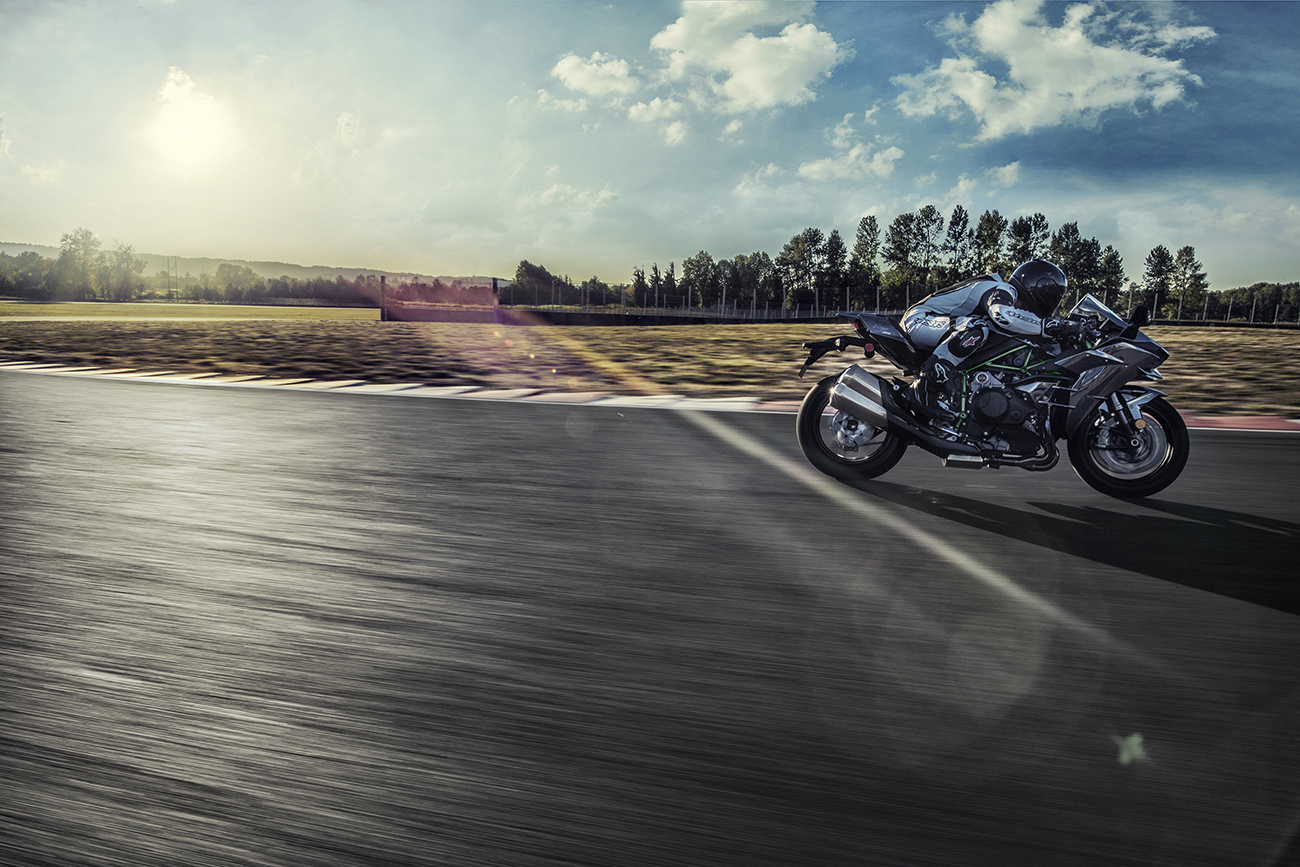
This high-performance racing engine bike is also equipped with advanced electronics, including ride-by-wire throttle, enhanced traction control, and multiple aggressive sport riding modes that allow riders to adjust the optimal performance to their liking. We could feel the smooth deceleration when trying it.
Plus, its massive power is also enhanced by a ram air intake system that provides a steady stream of cool, dense air to the engine, boosting its performance even further.
Braking Performance
The Ninja H2 comes with dual semi-floating 330 mm discs up front and a single 250mm Brembo disc at the rear brake. These brakes are complemented by a Brembo radial-pump master cylinder, which offers a solid and responsive feel. The brakes are also assisted by the Kawasaki Intelligent anti-lock Brake System (KIBS) for more stopping power, which helps prevent wheel lock-up and skidding in adverse street riding and aggressive braking conditions.
Besides the KIBS ABS brake assistance system, the Ninja H2 also features a unique Kawasaki Electronic Control Suspension (KECS) system that offers semi-active suspension control. This system works in conjunction with the Brembo engine braking system to provide excellent stability and high-precision control during braking.
It constantly adjusts the suspension damping based on the rider’s inputs, the road surface, and the bike’s speed, ensuring maximum grip and coordinated control at all times.
Cornering And Handling Characteristics
The H2’s chassis features a trellis frame, which is light and rigid, matching with the highly aerodynamic body design to provide excellent stability and control. Plus, the precision steering geometry is designed to be more responsive than previous models, with a shorter wheelbase and steeper steering angle. This styling setup allows the bike to change direction quickly and easily, making it highly maneuverable and being able to handle a wider range of conditions.
In addition to these dedicated features and components, the Ninja H2 also has Kawasaki’s proprietary Kawasaki Quick Shifter (KQS), which allows the rider to perform quick shifting up and down through the gears without using the clutch. This basic function provides smooth and seamless gear changes, which are essential when navigating a tight corner.
2023 Ninja H2: A Brief Review
Besides being a bike with strong power, the Kawasaki Ninja H2 is a high-performance motorcycle with a superb fuel efficiency, making it a fine choice for long-distance rides. With a 4.5-gallon tank of fuel, some state that even though this is not the largest fuel capacity among motorcycles, it is sufficient for the Ninja H2’s intended purpose as a high-speed sports bike.
Another impressive aspect of the 2023 Kawasaki Ninja H2 is its technology. This motorcycle is equipped with advanced electronics, including a quick shifter, launch control, and multiple riding modes. These features allow the rider to customize its performance to their preferences and provide greater control in various riding situations.
Despite its high-performance capabilities, users are also impressed with how comfortable the 2023 Ninja H2 is to ride. The vehicle’s ergonomics have been improved, and the seat is now more comfortable than ever before. The bike also features a number of convenient features, such as a TFT display, Bluetooth connectivity, and smartphone integration, which make it easy to stay connected while on the road.
Unfortunately, the gas mileage is not published by the manufacturer. Anyway, we have tested and considered this beast a gas-guzzler, which craves for gasoline more often than other bikes from Kawasaki. Though this is due to its high-performance capabilities, it’s still a pain in the neck since the upfront price is already exorbitant.
Money-wise, the Kawasaki H2’s pricing is its main turn-off for a wide range of riders. This is a high-end motorbike with supercharged power that is made for professional riders who need the utmost efficiency and innovation. As a result, it has a price to match. The Ninja H2’s product pricing of $31,500 makes it prohibitively expensive for many bikers.
And, of course, this motorcycle could be a pipe dream to handle for those who first dip their toe in this field. Still, we say it is worth it due to its absolute power capability.
2023 Kawasaki Ninja H2 Photos & Videos
Photos
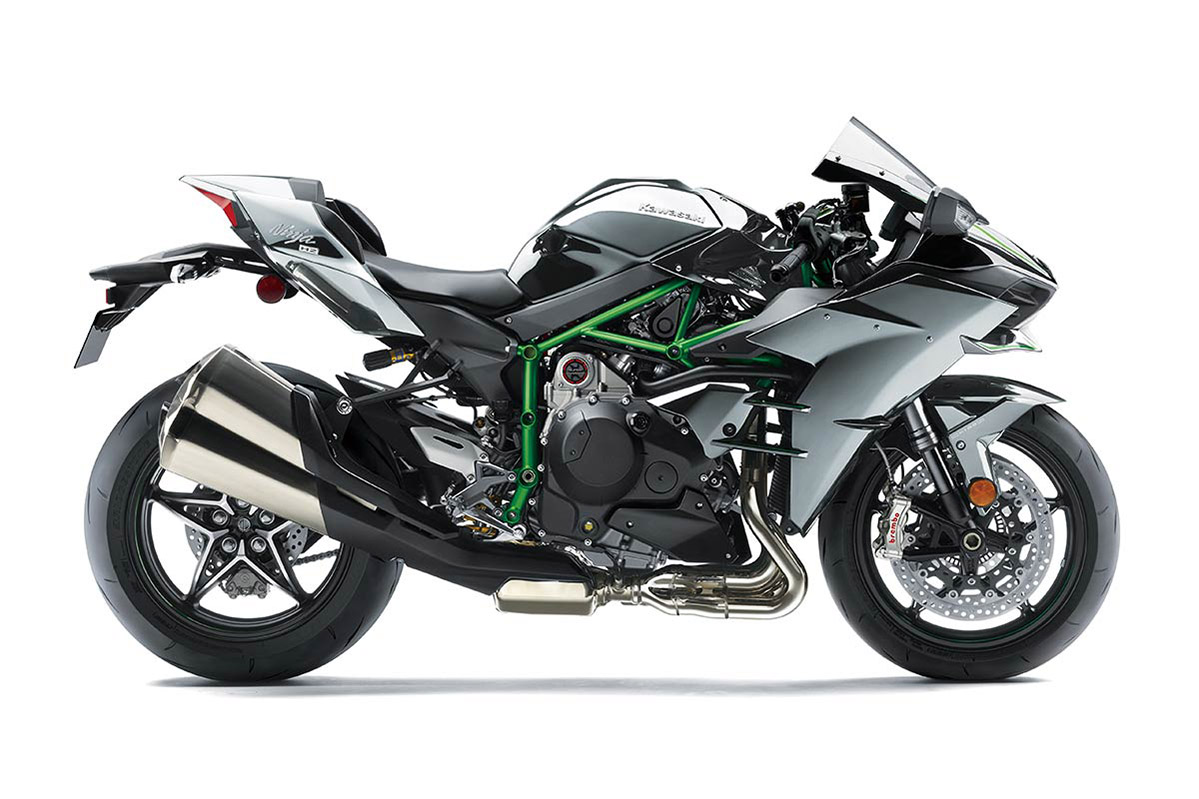
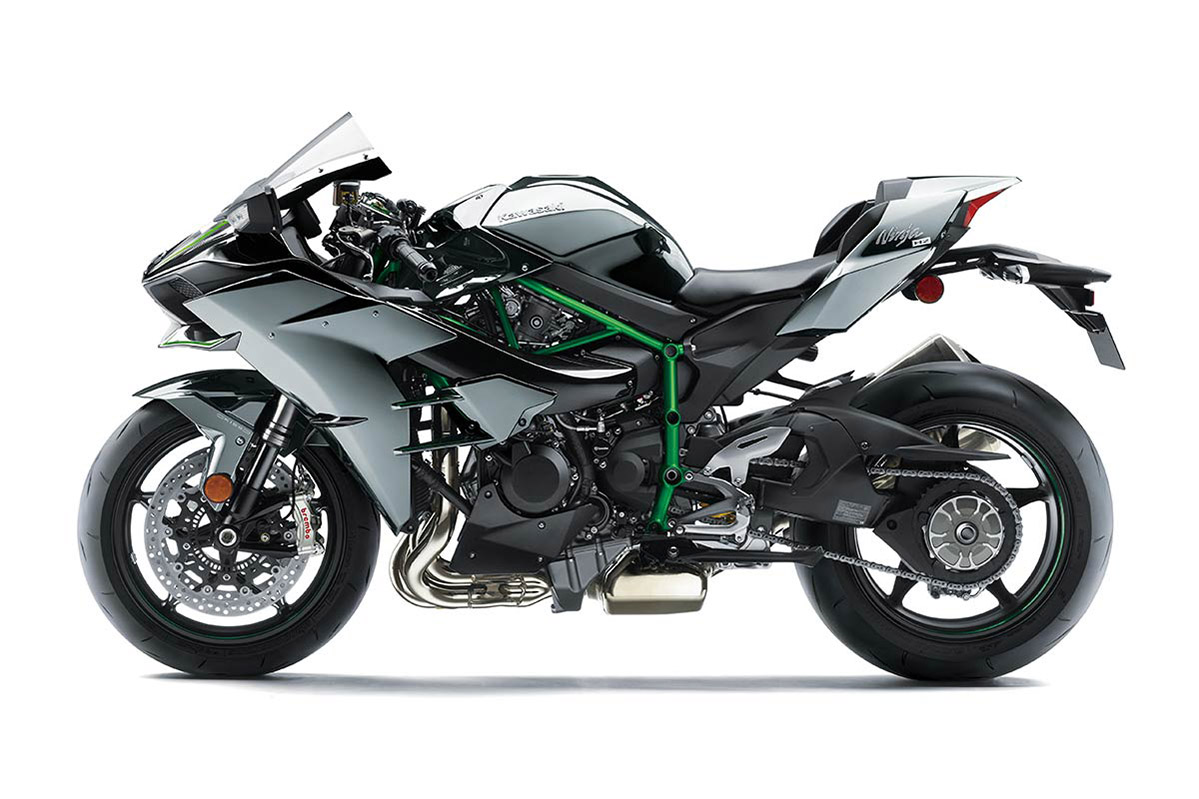
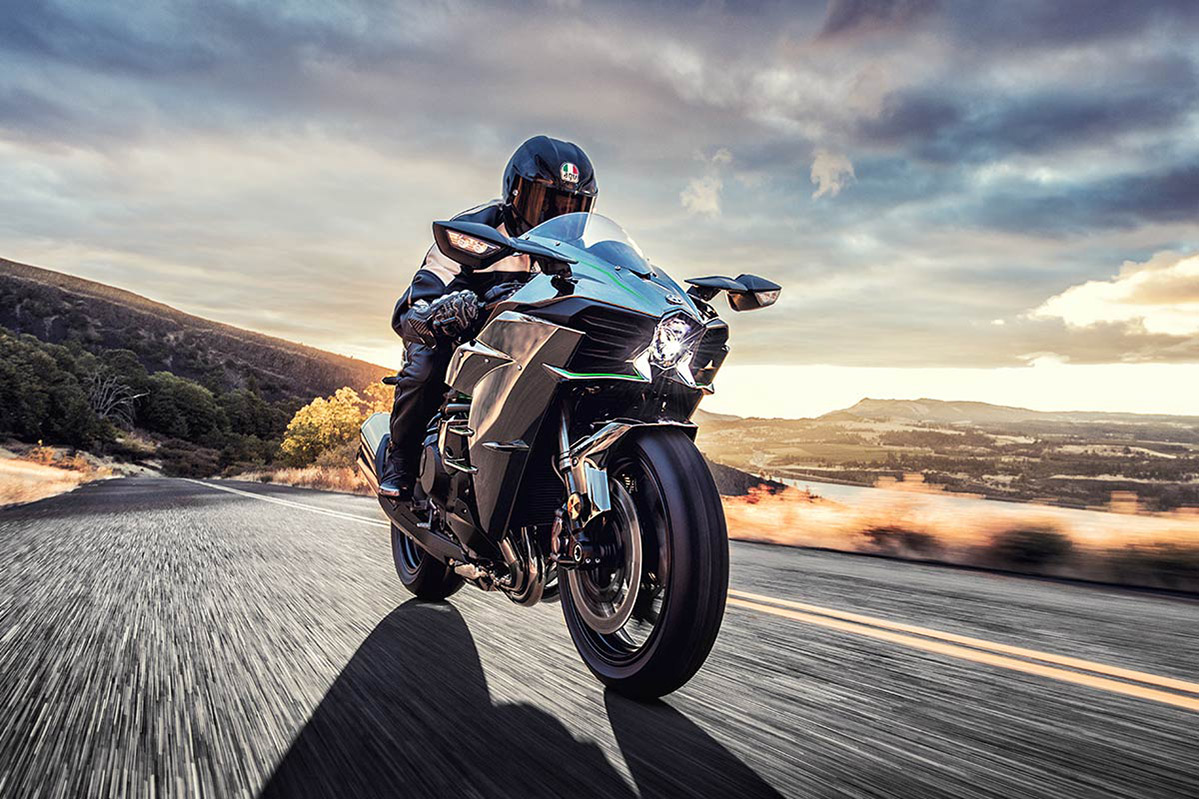
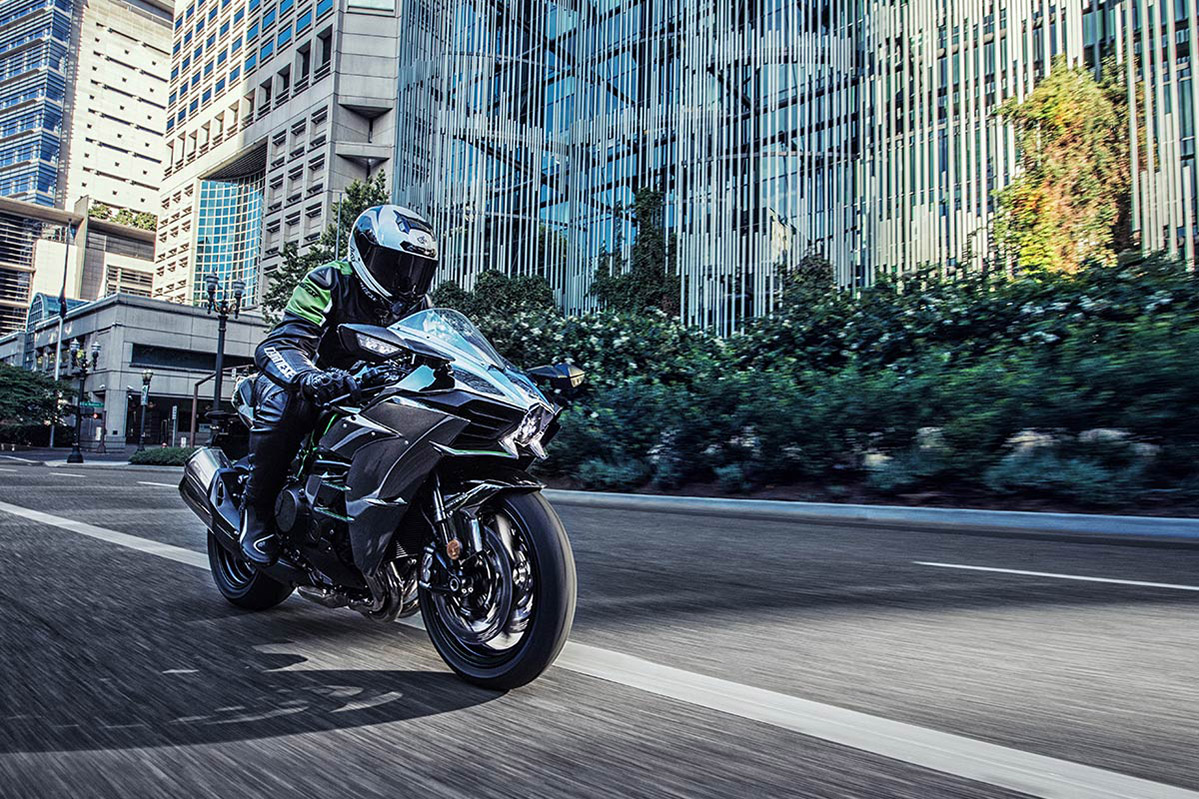
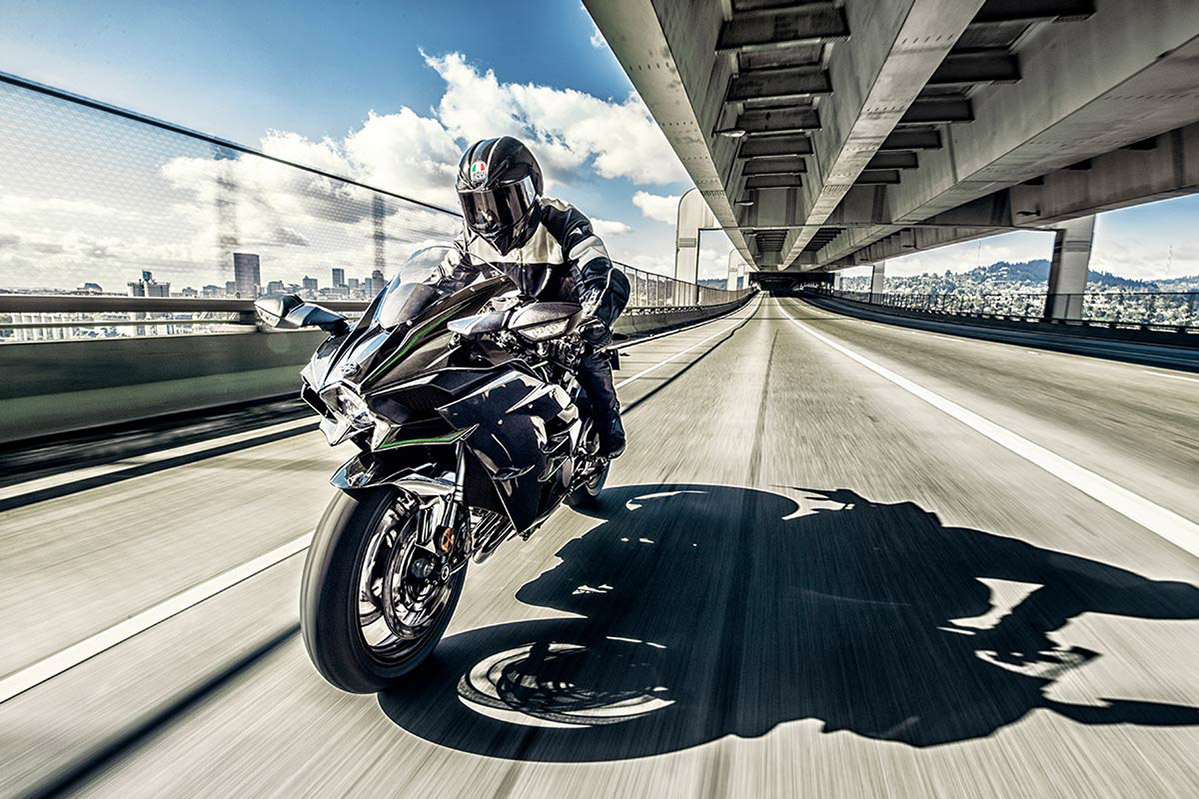
Videos
Reference Sources:
*Disclaimer: The prices mentioned in this article may vary depending on the dealership and location. Additionally, the specifications mentioned, such as horsepower and top speed, may vary from different sources as they are often tested under different conditions.
